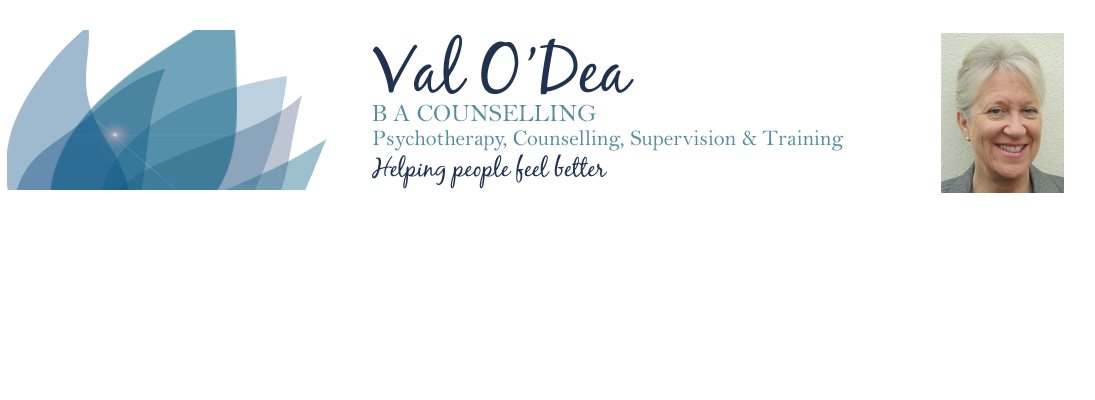What do you as a client, need, want… and get?
In the commercial world, one might say if you want to know what John Smith buys, you must see life through John Smiths eyes. The ability and quest to see life through the eyes of a client, is central to the work of the counsellor. The true answer to the question (what do clients need and want) is of course unique to each individual, however what people seek from counselling falls into categories, for example dealing with feelings such as guilt, anger, pride, anxiety, fear, shame, confusion and grief – of which the client is normally acutely aware, but with some clients, maybe out of awareness.
Counsellors commonly experience that the presenting issue a client describes during their first session, may not become the focus of the work. For example, a person may initially say they wish to cease their bulimic behaviour but spend most subsequent sessions working with previously un-expressed childhood feelings. Or a client might present marriage difficulties at an initial session but the work evolve around a lifetimes lack of confidence or employment redundancy. What clients present, maybe an issue in itself or maybe a symptom of other issues. Issues maybe acute, e.g. bereavement or chronic, e.g. depression.
In responding to clients needs, some counsellors stick to a particular model, as explained elsewhere on this website, e.g. Person-Centred, Psychodynamic or CBT. Others though, are integrated. Not all clients are interested in counselling models and approaches they just want help to feel better .and have some understanding of the service they are buying or receiving! But how are the different approaches integrated by some counsellors ? Sometimes, the counsellor has just received training in more than one model and uses or mixes bits of each training. However the writer believes that the clients presence within the therapy RELATIONSHIP, is the integrating matrix. The relationship is the therapy and not a preparation for it.
Because a clients level of awareness can only be subjectively measured, it is inappropriate to conclude any one approach can be pre-selected, especially when there is no evidence that one approach works better than others. And (unless one takes the view that pole opposite mirroring is of therapeutic value,) if the client presents as a primarily feeling person, Humanistic theory and practice would compliment. If the client presents interest in where feelings come from, Psychodynamic theory and practice is compatible. If the client presents thoughts and behaviour, CBT theory and practice would mirror. However, evidence of client presentation material is only apparent within the relationship thus the counsellors stance should be reactively, not pro-actively selected.
Client A might present with physical symptoms, e.g. stomach pain and vomiting. It may later transpire these were caused by cognitive or emotional reasons. Or the reverse may apply Client Bs stomach pain might have caused cognitive or emotional reactions. If a counsellor favours and routinely uses for example, Gestalt exercises e.g. art therapy or empty chair work, this might only be appropriate with client A but not with client B. Client A may need to release deep emotions whereas client B needs to see a GP and be reassured their stomach pain is a treatable ulcer and not an incurable cancer !
If a counsellor is to assist clients to live fluidly across polarities such as trust and dependency, autonomy and authority, co-operation and competition, the counsellor must also be fluid across these poles as well. Because a counsellor cant take clients where they have not been themselves. Stereotypically, when viewing why a counsellor has selected (to be trained in) a particular model the psychodynamic counsellor might be accused of being too egotistical and the Person Centred counsellor of being too empathic. I suspect the effective counsellor is one who is comfortable across the spectrum, depending on the client and irrespective of the model.
And sometimes clients discover they don’t really want help. If a client is more interested in for e.g. the comfort of illusion, rather than in struggling with aloneness, then this is proof that clients are experts on themselves – they need the therapeutic relationship more than they need the counselling theories.
Interpretations of both what goes on in the counselling relationship and about the client, are merely opinions and explanations. Thus one might take the view that labels and language used (or rejected) by the various therapy theories, at the common denominating level of therapist and client together, are actually all quite complimenting and similar. For example, the process goals of the Gestalt therapist are different to the outcome goals of the CBT therapist. The psychoanalytic counsellor becomes familiar with transference and counter-transference whereas the Person Centred counsellor fosters her own understanding of herself and her congruence. But always, the therapist and counsellor together form the relationship. The client gets this, irrespective of the model or models chosen by the counsellor.
You May Also Like

